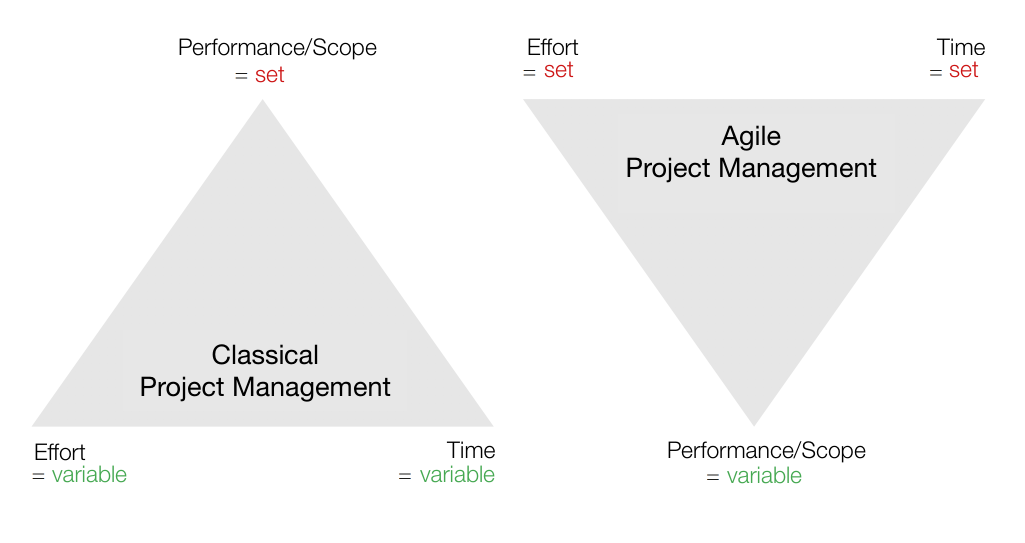Everyone wants to be agile - but what does that mean exactly? When we ask our customers, we often hear, "It's faster. I do not have to know exactly what I want to/should do. I do not need a plan. I am more flexible.” Well, not all of these claims make the very origin of agile methods. In this article you will learn more about the values behind agile approaches, what it means for organizations and which agile methods are of central importance for the dissemination and use of agile methods.
Agile Values
Let's go back about 20 years in time, to the year 2001. At that time, 17 experienced software developers (including Ken Schwaber, Jeff Sutherland and Mike Beedle) met with the goal of finding common ground for an agile approach; this resulted in the Agile Manifesto, which is to be understood as a fundamental statement of values for the agile methods based on it. However, without wanting to discuss this manifesto in detail, it is important to know the underlying value system. On the one hand, this value system is based on all agile approaches and on the other, it can have a massive impact on affected organizations.
But what agile values are we talking about? Already a short excerpt makes direction clear, since it's about:
- Self-organized, self-managed teams
- Self-reflection
- Focus is on customer satisfaction
- Face-to-face communication
- Changes to requirements are welcome
- Support and trust
What does that mean for the organizations concerned? Imagine a company that has been traditionally (hierarchically) managed for many years: How easy is it in such a company to develop employees into self-organized teams without a leader? It could be the other way around in a young start-up. Here, the existing corporate culture could already be a very good basis for agile procedural models. It may already be apparent that agile process models are not just about well knowing and handling the methods and techniques, but also about generating the value system in the company as the basis for the methods.
To summerize:
- Agile values are the foundation and the operational principles
- Agile methods give agile techniques an overall structure
- Agile techniques are specific proceedings for implementing agile methods.
Agile Methods
There is a wealth of agile methods and you might feel that there is more every day. The survey "Status Quo Agile"1 has identified Scrum, Kanban, and Design Thinking as being of central importance for the dissemination and use of agile methods - and we would like to focus on these methods in our blog series.
Source
-
Status Quo Agile, Studie zu Verbreitung und Nutzen agiler Methoden, FH Koblenz 2015, ↩







 Jira
Jira
 Confluence
Confluence
 SAP
SAP
 API
API





